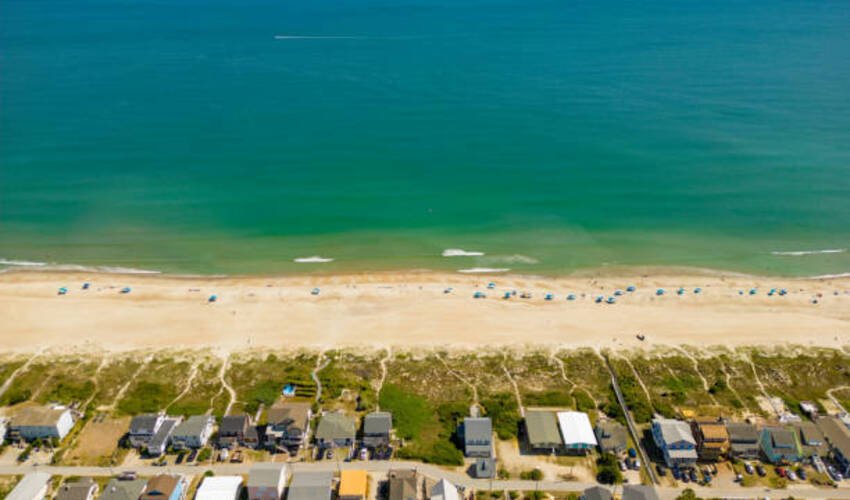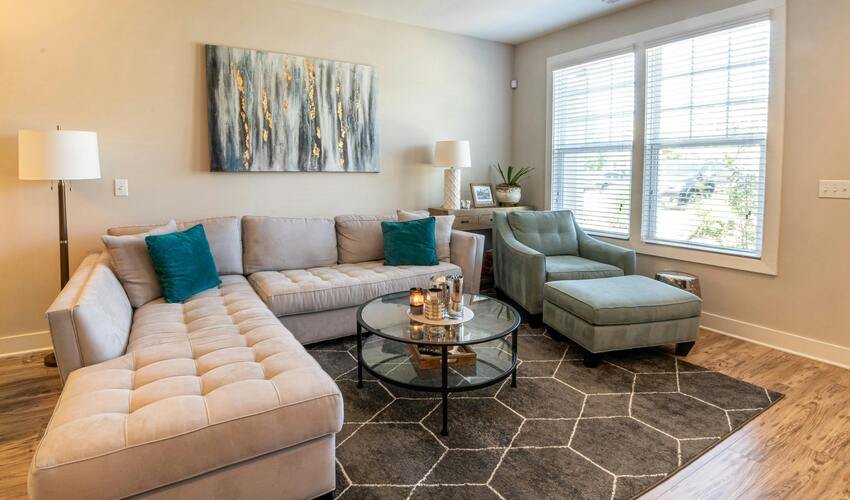Building a small cabin or micro-villa on the Eastern Seaboard may sound like a billionaire’s pastime, yet a handful of coastal pockets still offer shoreline land for the price of a suburban starter lot. In 2026, the financial equation comes down to three factors you can actually control: where you buy, how you specify materials, and how quickly you move from sketch to permit. Get those right, and a sunrise-over-the-Atlantic retreat can become both a lifestyle win and a steady cash-flow asset.
The Last Inexpensive Waterfront Enclaves
Outer Banks, North Carolina. Protected canal lots on Hatteras and Kill Devil Hills still sell around $200,000 for roughly one-third of an acre—less than half the cost of an oceanfront parcel two streets away. Listings move fast because rental caps are loose and gross seasonal rents often exceed $70,000 on a two-bedroom cottage.
Eastern Shore, Maryland–Virginia. The Chesapeake’s marshy finger-lands may look sleepy, but their per-acre median—about $22,000—remains one of the lowest saltwater valuations in the mid-Atlantic. Buyers from D.C. and Philadelphia scoop up canal lots with dock potential, drawn by fish-camp charm and proximity to millions of metro residents.
Down East Maine. Beyond tourist hubs like Bar Harbor and Camden, Washington County still offers waterfront acreage in the mid-$40,000 range. Buyers willing to handle freeze-thaw cycles and shorter construction windows gain access to untamed shoreline, dark-sky nights, and ultra-low holding costs.
Florida’s Big Bend. Because the sand is darker and nightlife sparse, Citrus and Levy counties list canal lots between $90,000 and $180,000—bargain prices by Florida standards. Coastal cottages here ride the scallop-season rental wave and avoid the Panhandle’s soaring insurance premiums.
Are These Markets Worth the Risk?
Rental Math. Even a modest 700-square-foot cabin in the Outer Banks can gross $65,000 across peak summer and shoulder weeks, often covering debt service in just eight to ten bookings.
Appreciation. Eastern Shore values rose 8% in 2024 on the back of strong crab-pot harvests and a remote-worker influx. Brokers expect similar single-digit gains so long as Maryland’s vacancy rate stays under 3%.
Climate Exposure. Florida’s Big Bend is seeing insurers return after steep 2023 hikes, thanks to new state-backed reinsurance and lower storm counts than the Keys or Panhandle.
Exit Liquidity. Buyer pools are thinner in Maine and the Eastern Shore, so underwrite for a three- to five-year hold if planning to flip.
Budgeting the Build—Slab, Pilings, or Stilts?
National data put coastal home construction between $220 and $580 per square foot in 2025, depending on hurricane straps, breakaway walls, and wind-rated glass. Elevated piling construction—often mandatory in AE or VE flood zones—adds another 15–25%. Skipping elevation in storm-prone counties can mean flood insurance premiums topping $8,000 annually.
- A 900-square-foot Down East Maine cabin on piers can finish for about $250,000 turn-key.
- A 1,200-square-foot canal villa in Florida on pilings pushes closer to $450,000, largely due to engineered foundations and impact glazing.
- Expect four to six months of site work in North Carolina or Maryland, but closer to ten in Maine, where winter concrete pours halt progress.
Materials That Survive Salt and Humidity
Fiber-cement or shiplap cedar siding, sealed on all six sides, outlasts vinyl that oxidizes under UV and salt.
Stainless steel (316 grade) or hot-dip galvanized fasteners resist corrosion and prevent stains.
Closed-cell spray foam beneath elevated floors locks out vapor and pests while doubling as a wind diaphragm.
Standing-seam aluminum roofs handle driving rain and uplift, while pairing well with solar panels.
Continuous mechanical ventilation—via ERVs—refreshes indoor air hourly and helps prevent mildew.
Design Workflows That Shrink Pre-Construction
Vintage builds dragged on because owners approved plans by mail, sometimes over months. Now, cloud-hosted platforms let architects adjust layouts in real time while clients watch 3D models update instantly. One-click renders are ready in minutes, shrinking design feedback from weeks to hours. Crucially, the same platforms double as floor plan software, letting engineers and code reviewers pull dimensional PDFs or export DWG files without delay. Shared access often saves an entire week in the Outer Banks, where permit windows are notoriously short.
Pitfalls First-Timers Should Avoid
- Ignoring FEMA flood maps—zoning changes can quadruple insurance overnight.
- Under-ventilating crawl spaces, leading to rot.
- Using cheap hardware that corrodes in a season.
- Skipping soil borings—especially on Eastern Shore marshes, where peat can trigger costly foundation redesigns.
- Assuming “beach rules” match mainland code—Big Bend counties still demand 150-mph roof tie-downs.
Financing and Insurance Hacks
Bundle builder’s risk with flood insurance—some carriers discount 15% if they handle both.
Seek coastal-specialist lenders, as national banks often balk at pilings.
Pre-buy impact glass, which had 18-week lead times in 2024—order early to avoid framing delays.
The 2026 Outlook
Remote work isn’t dead; it’s regional. If office-optional employees keep chasing low-tax counties with outdoor amenities, these fringe shorelines will ride a second demand wave. Meanwhile, building codes increasingly reward over-spec’d, salt-proof details, favoring owners who future-proof cabins today rather than retrofit under pressure tomorrow.
Bottom line: A budget-friendly Atlantic retreat is still possible—if you target undervalued coastlines, respect the science of salt and humidity, and leverage digital design tools to sprint from offer to occupancy. Done wisely, the same cabin that hosts dawn surf sessions can also strengthen your balance sheet for decades.
Read Dive is a leading technology blog focusing on different domains like Blockchain, AI, Chatbot, Fintech, Health Tech, Software Development and Testing. For guest blogging, please feel free to contact at readdive@gmail.com.





